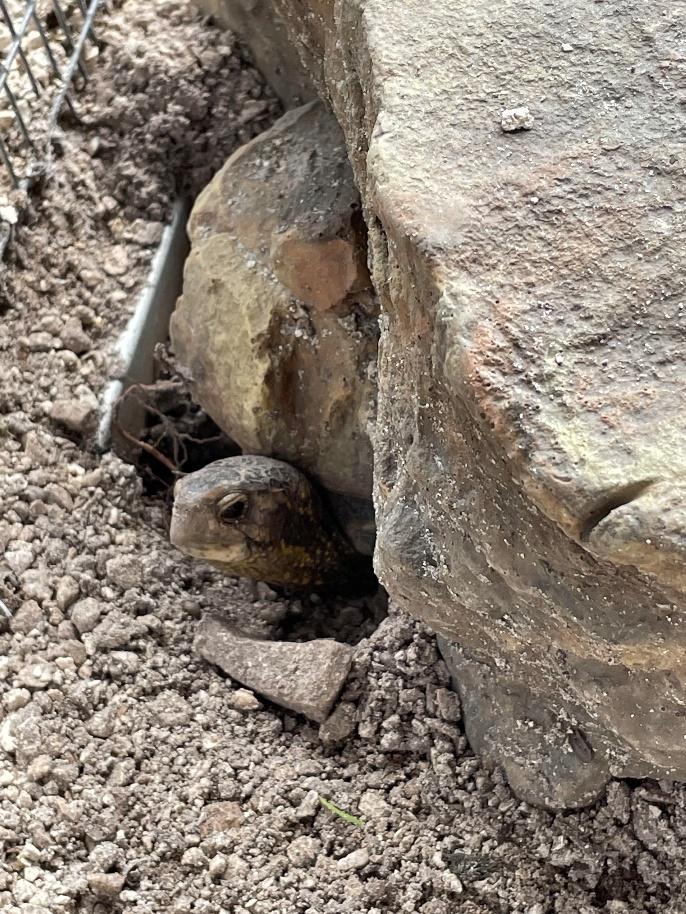From Teenage Mutant Ninja Turtles to The Tortoise and the Hare, everyone can agree that these shelled creatures are adorable. Here are some turtle-y awesome facts you may not know:
Turtles spend most of their lives in water… usually. Some turtles, like Box Turtles, stay on land.

One of our resident box turtles peeks out from below a rock
Slow-moving tortoises have an advantage – they might be ignored because they look like rocks!
Some tortoises LOVE to dig! Gopher Tortoises may construct many burrows and they can be up to 40 feet long and 10 feet deep.
Scientists believe they can see the color red best.
Their shells are made of bone and covered in thick scutes made of keratin (like our fingernails!)
It is illegal to move gopher tortoises from their home. They are a keystone species, those burrows they dig provide shelter for up to 400 species of animals!
It is also illegal to take sea turtle eggs. Sea turtles have a rough time of it, only about 1 in 1,000 makes it to adulthood! If caught poaching these eggs, offenders face a fine of up to $100,000 and up to a year in jail.
Many species of turtles and tortoises are endangered. In some countries, it is believed that their parts have medicinal properties which leads them to be poached – taken illegally from the wild.
Some turtles and tortoises can live up to 200 years! But the average of most species is about 50 years. That’s still a long time if you are considering getting one as a pet. Red-eared sliders have been a common pet for many years and unfortunately, our native turtles are suffering because of it. Many people have released their turtles into the wild and these non-native reptiles are taking resources from our native turtles. They are now a conditional species in Florida, you’ll need a permit to keep one as a pet.
Please always do your research before getting any animal as a pet and NEVER release unwanted pets into the wild.

A red-eared slider basks in the small wetland behind the nature center






















